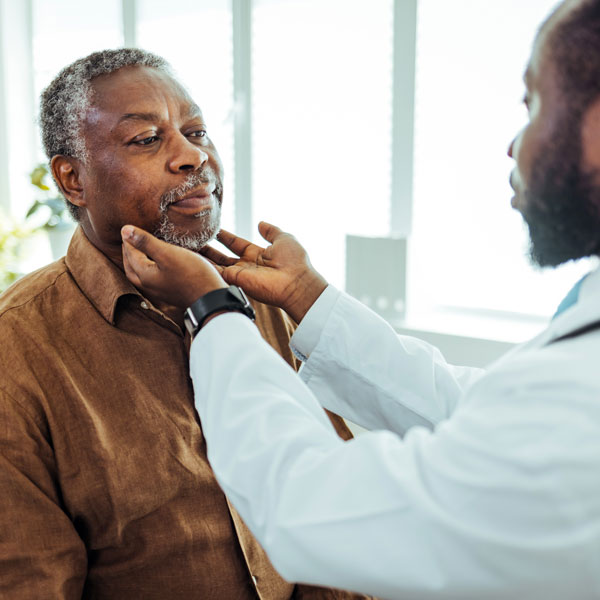Peripheral Arterial Disease
Treating Peripheral Artery Disease in Louisville, KY
What Is Peripheral Artery Disease?

Recognizing the Symptoms of PAD
Identifying PAD symptoms is the first step in managing this condition. Some people with PAD may not have any symptoms, but others experience mild to severe effects. The most common symptoms are pain and swelling in the legs, leading to discomfort while walking. In many cases, the pain goes away but returns with continued activity. Other symptoms may include:
- Numbness in the legs
- Leg weakness
- Non-healing sores on the legs, feet, or toes
- Changes in leg or foot color
- Coldness in the feet and toes
What Causes PAD?

Diagnosing Peripheral Artery Disease
Early detection is crucial for managing PAD and preventing complications. Once your doctor takes stock of your medical history and symptoms and performs a physical exam, they will refer you for diagnostic testing. These tests provide critical details and allow us to formulate the best treatment plan. Specific tests might include:
- The Ankle-Brachial Index (ABI)—Compares blood pressure in your ankles to that in your arms.
- Doppler Ultrasound and Angiogram—Visualizes blood flow in the arteries.
Explore Your PAD Treatment Options
You don’t have to deal with pain in your feet and legs forever. We offer several treatments for PAD to restore your ability to move comfortably. Treatment typically focuses on reducing symptoms and preventing disease progression. The three main avenues for treatment include:
Lifestyle Changes
We recommend getting plenty of exercise and eating a healthy diet to improve your overall condition. Our team also stresses the importance of quitting smoking to alleviate PAD symptoms.
Medication
In some scenarios, we prescribe medication to manage symptoms and underlying conditions, such as high blood pressure, high cholesterol, and blood clots.
Surgery
Occasionally, surgery is necessary to relieve PAD symptoms. We may recommend a minimally invasive procedure called an atherectomy to remove the plaque buildup from the artery walls. During this procedure, a catheter is inserted through a small groin incision. Real-time imaging allows the doctor to target and remove the plaque without damaging the artery. An atherectomy can significantly improve blood flow and relieve PAD symptoms but is generally part of a more comprehensive treatment plan.
Protect Yourself Against PAD
Fortunately, peripheral artery disease is often preventable. If you’re hoping to lower your chances of contracting the condition, take these steps to maintain a healthy circulatory system:
- Avoid smoking or take steps toward quitting
- Keep diabetes under control with prescribed treatments
- Exercise regularly
- Maintain a nutritious diet and a healthy weight
- Take measures to lower blood pressure and cholesterol levels
Get in Touch With Our Specialists
Residents in the Louisville area and Southern Indiana trust Precision Vascular Kentucky for effective PAD diagnosis and treatment. We’re proud to be one of the only places regionally to offer specialized care for peripheral artery disease, uterine fibroids, and joint pain under one convenient roof. We see patients from Jeffersonville, Clarksville, New Albany, Saint Matthews, Bardstown, Elizabethtown, Shepherdsville, Mount Washington, and many other surrounding communities. Our specialists are glad to be your guide as you manage and overcome peripheral artery disease. Take the first step toward better vascular health and schedule your appointment with a PAD and wound care specialist.

